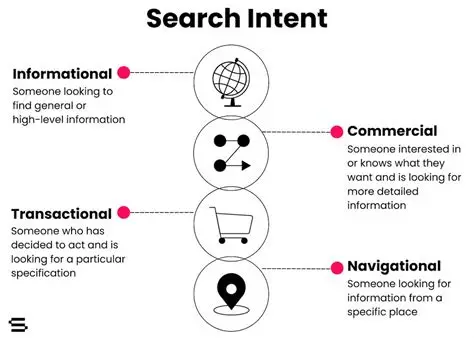How Is User Behavior in Search Different From General Behavior on Websites?

When people browse the internet, their actions can be categorized into two broad contexts: general website behavior (how they interact with pages, navigation menus, or products once they’ve landed somewhere) and search behavior (how they engage with search engines like Google, Bing, or even internal site search tools).
While these behaviors may seem similar at first glance, they differ significantly in intent, patterns, data signals, and business implications. Understanding these differences is critical for SEO professionals, digital marketers, product teams, and anyone interested in leveraging user behavior for strategy.
1. The Core Difference: Intent vs. Interaction
The primary distinction between search behavior and general website behavior lies in intent.
-
Search Behavior:
A user is actively seeking something—an answer, a product, or a solution. Every search query is essentially a problem statement. For example, typing “best running shoes for flat feet” into Google demonstrates a clear need. -
Website Behavior:
Once on a site, intent shifts toward interaction. The user may browse, compare, or consume content. For instance, on an e-commerce website, they might click product pages, filter results, or read reviews.
In short:
-
Search is goal-oriented.
-
Website activity is interaction-driven.
2. Behavioral Patterns in Search vs. On-Site
Search Behavior Patterns
-
Query Formation – Users think carefully about keywords or questions. They may refine queries multiple times before being satisfied.
-
Scanning SERPs (Search Engine Results Pages) – Instead of deep reading, users quickly scan headlines, snippets, and ratings.
-
Click-Through Behavior – Eye-tracking studies show most clicks happen on the first 3–5 results, though featured snippets and ads capture attention.
-
Pogo-Sticking – If the clicked result doesn’t satisfy them, users bounce back to SERPs immediately and try another result.
-
Abandonment – Sometimes, a quick glance at the SERP (like a featured snippet or knowledge panel) answers the query without a click.
General Website Behavior Patterns
-
Navigation Exploration – Users click menus, categories, and links to orient themselves.
-
Content Consumption – Reading blog posts, watching videos, or reviewing products.
-
Conversion Paths – Adding items to cart, filling forms, or subscribing.
-
Engagement Depth – Metrics like session duration, scroll depth, and pageviews reflect interest.
-
Exit or Bounce – Leaving after one page view or after completing a desired action.
3. Data Signals: Search Engines vs. Website Analytics
-
Search Engines Track:
-
Query types and refinements
-
Click-through rates (CTR) on results
-
Dwell time (time spent before returning to SERP)
-
Bounce-back rates (pogo-sticking)
-
-
Websites Track:
-
Session duration
-
Pages per session
-
Conversion events (purchases, downloads)
-
User journeys (paths across the site)
-
Together, these datasets give a full view of user intent and satisfaction.
4. Why Search Behavior Is More Intent-Heavy
Unlike general browsing, search activity is closer to the moment of decision-making.
-
In SEO and paid search marketing, the keywords a user types reveal immediate intent (informational, navigational, or transactional).
-
In contrast, on a website, a user may just be exploring casually, without immediate plans to buy or convert.
For example:
-
A query like “cheap flights to New York” shows direct purchase intent.
-
Browsing an airline’s homepage may just indicate curiosity or brand exploration.
5. Business Implications of Search vs. Website Behavior
For SEO and Marketing
-
Search Behavior is critical for keyword research, ad targeting, and optimizing SERP visibility.
-
Website Behavior is essential for conversion rate optimization (CRO) and improving user experience (UX).
For Product Teams
-
Search Insights can reveal unmet needs (e.g., what users are searching but not finding).
-
On-Site Analytics helps refine navigation, features, and product offerings.
For Content Strategy
-
Search Queries reveal trending questions and topics.
-
Website Engagement shows which content retains readers and drives sharing.
6. The Role of Internal Site Search
Interestingly, internal search (on a website) blends both behaviors:
-
It mimics external search intent (users typing queries into a search bar).
-
But the interaction occurs within the website’s ecosystem.
Tracking internal search queries is incredibly valuable—it reveals exactly what users expect but may not find easily in navigation.
7. Challenges in Understanding Search vs. Website Behavior
-
Cross-Device Tracking – A user may search on mobile but convert on desktop.
-
Data Privacy – With changes like Google’s privacy updates, access to detailed search data is limited.
-
Attribution Gaps – It’s not always clear which part of the journey (search click or website content) influenced a conversion.
-
Behavior Evolution – Voice search, AI assistants, and zero-click SERPs are changing how people search.
8. The Future of Behavior Analysis
-
AI-Powered Search Engines (like Google SGE or Bing Copilot) are making search interactions conversational. This could blur the line between “search” and “website browsing.”
-
Personalization will intensify: Search engines and websites alike will tailor experiences in real time.
-
Unified Analytics will emerge, integrating SERP interactions and on-site behaviors into one seamless view.
Conclusion
User behavior in search is intent-driven, concise, and highly diagnostic, while general website behavior is interaction-rich and engagement-oriented. Both are essential for understanding the user journey, but they serve different strategic purposes:
-
Search behavior helps businesses capture attention at the discovery stage.
-
Website behavior ensures that attention is converted into action and loyalty.
For businesses, the key lies in connecting these two dimensions—optimizing both how users find you and what they do once they arrive.
- Arts
- Business
- Computers
- Παιχνίδια
- Health
- Κεντρική Σελίδα
- Kids and Teens
- Money
- News
- Recreation
- Reference
- Regional
- Science
- Shopping
- Society
- Sports
- Бизнес
- Деньги
- Дом
- Досуг
- Здоровье
- Игры
- Искусство
- Источники информации
- Компьютеры
- Наука
- Новости и СМИ
- Общество
- Покупки
- Спорт
- Страны и регионы
- World


